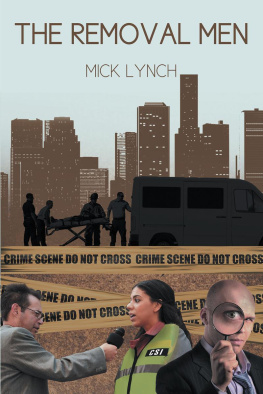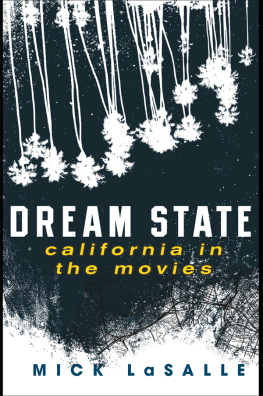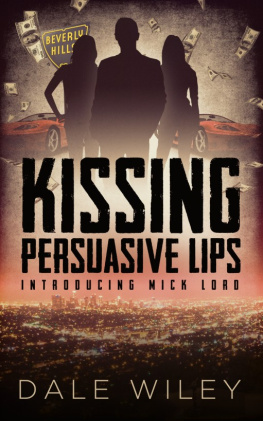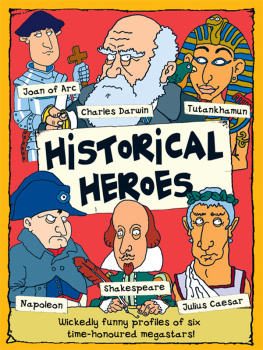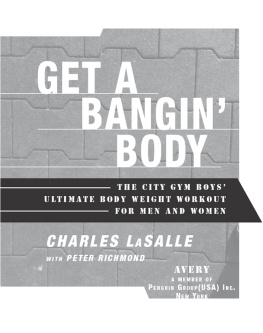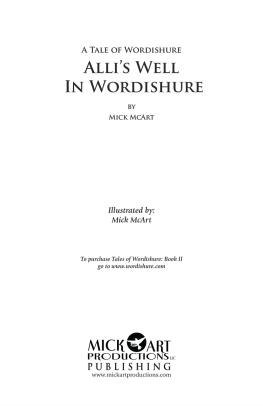LaSalle Mick - The Beauty of the Real
Here you can read online LaSalle Mick - The Beauty of the Real full text of the book (entire story) in english for free. Download pdf and epub, get meaning, cover and reviews about this ebook. year: 2012, publisher: Stanford University Press, genre: Science. Description of the work, (preface) as well as reviews are available. Best literature library LitArk.com created for fans of good reading and offers a wide selection of genres:
Romance novel
Science fiction
Adventure
Detective
Science
History
Home and family
Prose
Art
Politics
Computer
Non-fiction
Religion
Business
Children
Humor
Choose a favorite category and find really read worthwhile books. Enjoy immersion in the world of imagination, feel the emotions of the characters or learn something new for yourself, make an fascinating discovery.

- Book:The Beauty of the Real
- Author:
- Publisher:Stanford University Press
- Genre:
- Year:2012
- Rating:4 / 5
- Favourites:Add to favourites
- Your mark:
- 80
- 1
- 2
- 3
- 4
- 5
The Beauty of the Real: summary, description and annotation
We offer to read an annotation, description, summary or preface (depends on what the author of the book "The Beauty of the Real" wrote himself). If you haven't found the necessary information about the book — write in the comments, we will try to find it.
The Beauty of the Real — read online for free the complete book (whole text) full work
Below is the text of the book, divided by pages. System saving the place of the last page read, allows you to conveniently read the book "The Beauty of the Real" online for free, without having to search again every time where you left off. Put a bookmark, and you can go to the page where you finished reading at any time.
Font size:
Interval:
Bookmark:
The Beauty of the Real
What Hollywood Can Learn from Contemporary French Actresses
Mick LaSalle
STANFORD GENERAL BOOKS
An Imprint of Stanford University Press
Stanford, California
Stanford University Press
Stanford, California
2012 by Mick LaSalle. All rights reserved.
No part of this book may be reproduced or transmitted in any form or by any means, electronic or mechanical, including photocopying and recording, or in any information storage or retrieval system without the prior written permission of Stanford University Press.
Printed in the United States of America on acid-free, archival-quality paper
Library of Congress Cataloging-in-Publication Data
LaSalle, Mick, author.
The beauty of the real : what Hollywood can learn from contemporary French actresses / Mick LaSalle.
pages cm
Includes bibliographical references and index.
ISBN 978-0-8047-6854-2 (cloth : alk. paper)
ISBN 978-0-8047-8207-4 (e-book)
1. Motion picture actors and actresses--France. 2. Actresses--France. 3. Women in motion pictures. 4. Motion pictures, French--United States. I. Title.
PN1998.2.L376 2012
791.43'65220944--dc23
2011049156
Designed by Bruce Lundquist
Typeset at Stanford University Press in 10.5/15 Bell MT
For my mother, for Joanne, for Amy and for Leba Hertz.
Great women.
Contents
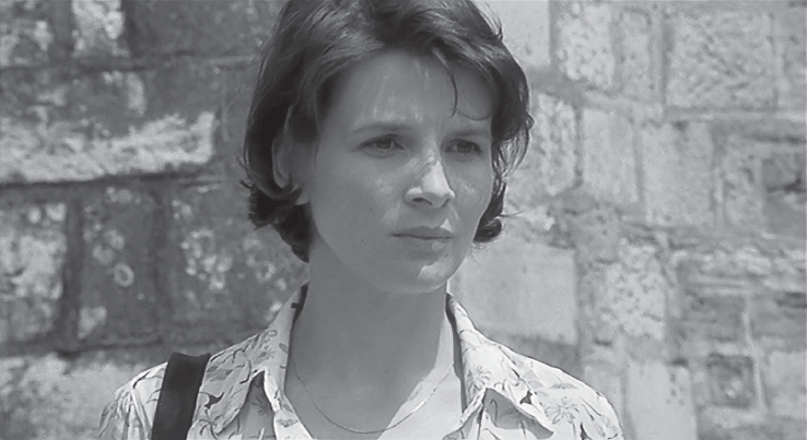
Juliette Binoche in Alice et Martin (Vertigo Films), 1998.
Introduction
Two Myths
WE BEGIN WITH A STORY, really half a story. You supply the ending.
It takes place in Paris, in the present day, where a nice young woman lives with her handsome boyfriend. But alas, she is not happy, because her boyfriend has become interested in another woman. Whats more, instead of suppressing this longing, which would have been virtuous, or cheating and keeping the fact to himself, which might have been convenient, he has moved the Other Woman into their apartment. Now three people sleep in the same bed.
At first, the nice young woman is willing to give this a try. She hopes this is just a phase. But as time goes on, she realizes that her passivity is perpetuating this state of affairs, that her boyfriend is quite happy to have two lovers and unwilling to give up this ideal situation. So she despairs. She confides in her mother. She spends time by herself, thinking and brooding. Inevitably, there are arguments, including one particularly fierce one as the three walk down a street heading toward a nightclub. But soon enough, they calm down and proceed to the club as planned. Its crowded. Loud music plays. And then....
Lets leave our story there. Imagine youre the screenwriter. Where would you take the story next? How would you develop it? How would you end it?
Let this percolate in the back of your mind for a bit, and well get back to it soon.
THIS IS A BOOK ABOUT FRENCH CINEMA, specifically the women of todays French cinemaa subject as vital as life and as irresistible as movies. Yet many Americans, unfamiliar with French film, will hear women of todays French cinema and immediately imagine something forbidding or austere. Other more refined cineastes may know and appreciate the French movies that play at art houses and arrive on DVD in this country, but they cant know the full story. They are not in a position to know that what they are seeing is just a hint of something vast and extraordinary.
The full story is that for the last two decades France has been in the midst of an explosion of female talent. What is happening in France today is a blossoming of female brilliance and originality of a kind that has never happened anywhere or at any period of film history, with but one glorious exceptionin the Hollywood of the 1930s. Indeed, todays Hepburns, Davises, Crawfords, Garbos, and Stanwycks are not American. Theyre French. They are working constantly, appearing up to three or four times each year in films geared to their star personalities and moral meaning. These films, often intelligent, personal, and insightful investigations into what it means to be human in the twenty-first century, are the kinds of films that many Americans want to see. And they wonder why no one is making them. But people are making them, just not in the United States.
Moreover, women are not only working in front of the camera in France but behind it, too. Important actresses are writing and directing films, and many of the countrys biggest and most acclaimed directors are women. Truly, this is a halcyon period, happening as we speak, and to miss this moment would be like living in 1920 and never seeing a silent comedy, or like living in 1950 and never seeing a film noir. It would be to miss one of the most enriching cinematic movements of your time. Yet most Americans, virtually all Americans, have been missing it.
AMERICAN FILMGOERS operate according to two myths when it comes to foreign film. Like most myths, they are comforting. Unlike a lot of myths, these are not even slightly true.
Myth Number One is that we in the U.S.especially those of us who live in cities and have access to film festivals and art housesget the very best of foreign cinema. We may not get everything, the idea goes, but why import what we already have? We dont need a routine cop thriller from Denmark. The important thing is that we get the best.
We dont.
The truth about foreign distribution in the United States is that what we get in theaters (and on DVD) is randoma small, haphazard sampling of average to above-average product. True, we usually dont get the worst films, but beyond that theres no pattern. Great movies are often ignored, while pretty good movies somehow slip in. And the vast, vast majority of good and great product we never see at all. We never hear about it. Unless we go out of our way to find out about it, we never know it exists.
Myth Number Two is even worse, because its pernicious, difficult to dislodge and is believed by many people, including sophisticated folks who care about movies. This is the notion that the dearth of foreign cinema in America doesnt really matter, because American independent films can serve the same function. According to this line of thinking, American independents can even be a kind of improvement, a lively, no-subtitles alternative.
In reality, American independent cinema is very much a product of the same culture that produces Hollywood films. The aesthetic values may be different, but the cultural values and assumptions are identical, because the films are, in the end, products of the same country, the same people and the same period of history. Some independent films may show us new ways of looking at movies, but they wont show us new ways of looking at life. Moreover, they tend to be guy-movies just as often as the films out of Hollywood. Hollywood guy-movies may be more violent or boorish, and independent guy-movies may be more thoughtful and sensitive. Hollywood leading men may be handsome, while independent leading men may be more scruffy or homely and look exactly like the director. But its still mostly guys, all the time.
Only foreign films can show us entirely new ways of being and of seeing life... which brings us back to the story that introduced this book, about the nice young woman forced into a three-way relationship by her randy live-in boyfriend. I asked you to come up with the rest of the story. Think about it for a minute, then read on.
HOW WE FINISH THE STORY highlights how we see the world. Present this scenario to a group of Americans, and inevitably you will hear the same three endings, all of them mere variations on a theme:
Next pageFont size:
Interval:
Bookmark:
Similar books «The Beauty of the Real»
Look at similar books to The Beauty of the Real. We have selected literature similar in name and meaning in the hope of providing readers with more options to find new, interesting, not yet read works.
Discussion, reviews of the book The Beauty of the Real and just readers' own opinions. Leave your comments, write what you think about the work, its meaning or the main characters. Specify what exactly you liked and what you didn't like, and why you think so.


